Abstract
Zimmerman, Leonard (U.S. Army Biological Laboratories, Fort Detrick, Frederick, Md.). Survival of Serratia marcescens after freeze-drying or aerosolization at unfavorable humidity. I. Effects of sugars. J. Bacteriol. 84:1297–1302. 1962.—Suspensions of Serratia marcescens were subjected to freeze-drying or to aerosolization at unfavorable humidity levels. The survival of the cells during one or the other of these treatments was markedly improved in the presence of common sugars, but no one sugar stabilized the cells against both stresses. The protective effects of the sugars were correlated with their penetrability into cells; minimally penetrable sugars stabilized cells against aerosolization, and freely penetrable sugars stabilized cells during freeze-drying. These results were attributed to the modifications of intracellular water content induced by the presence of the sugars in the cell suspensions.
Full text
PDF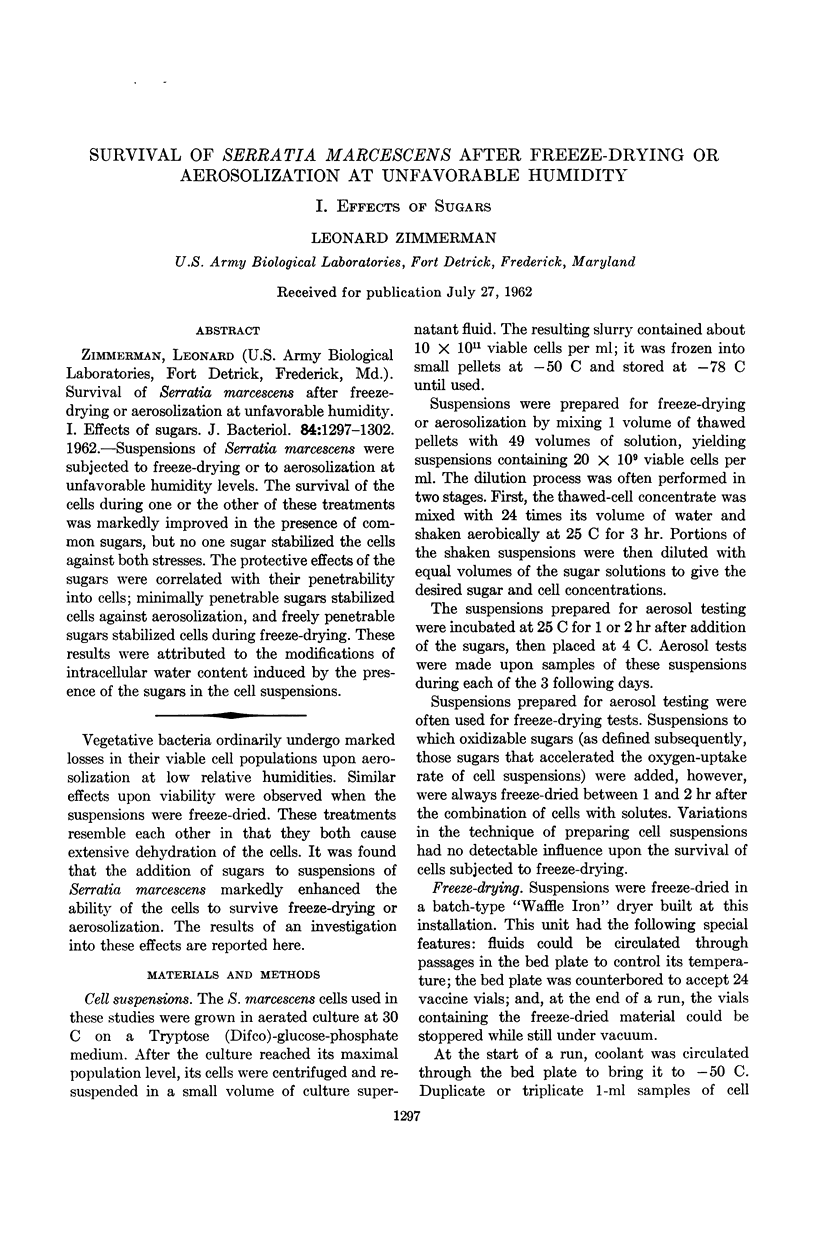
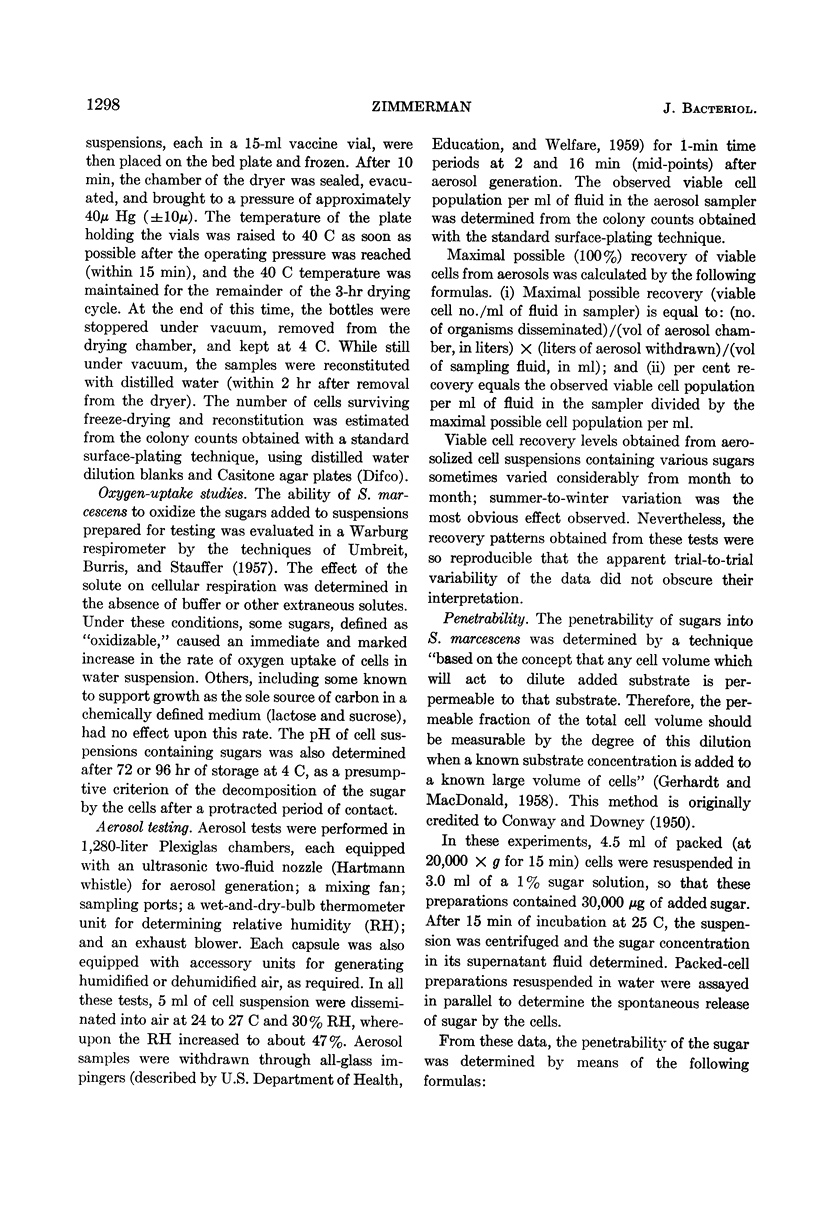
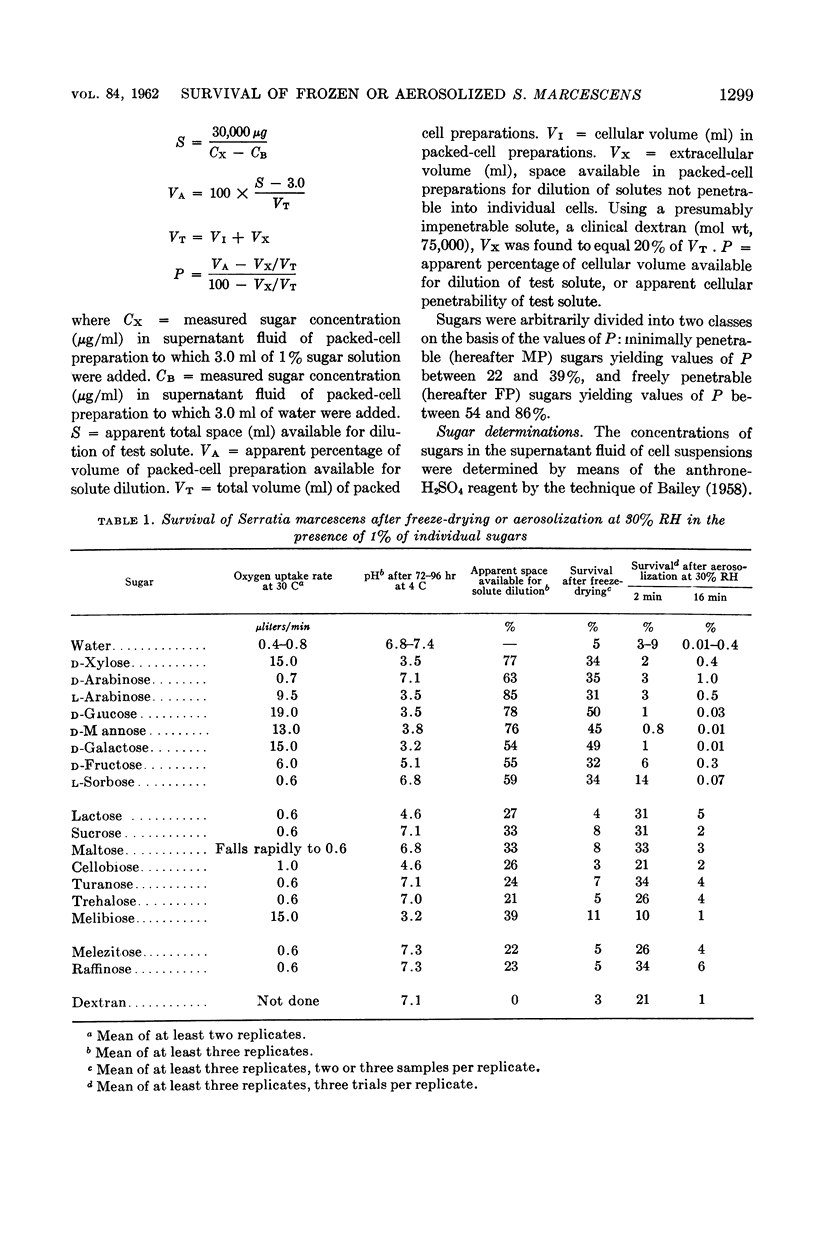
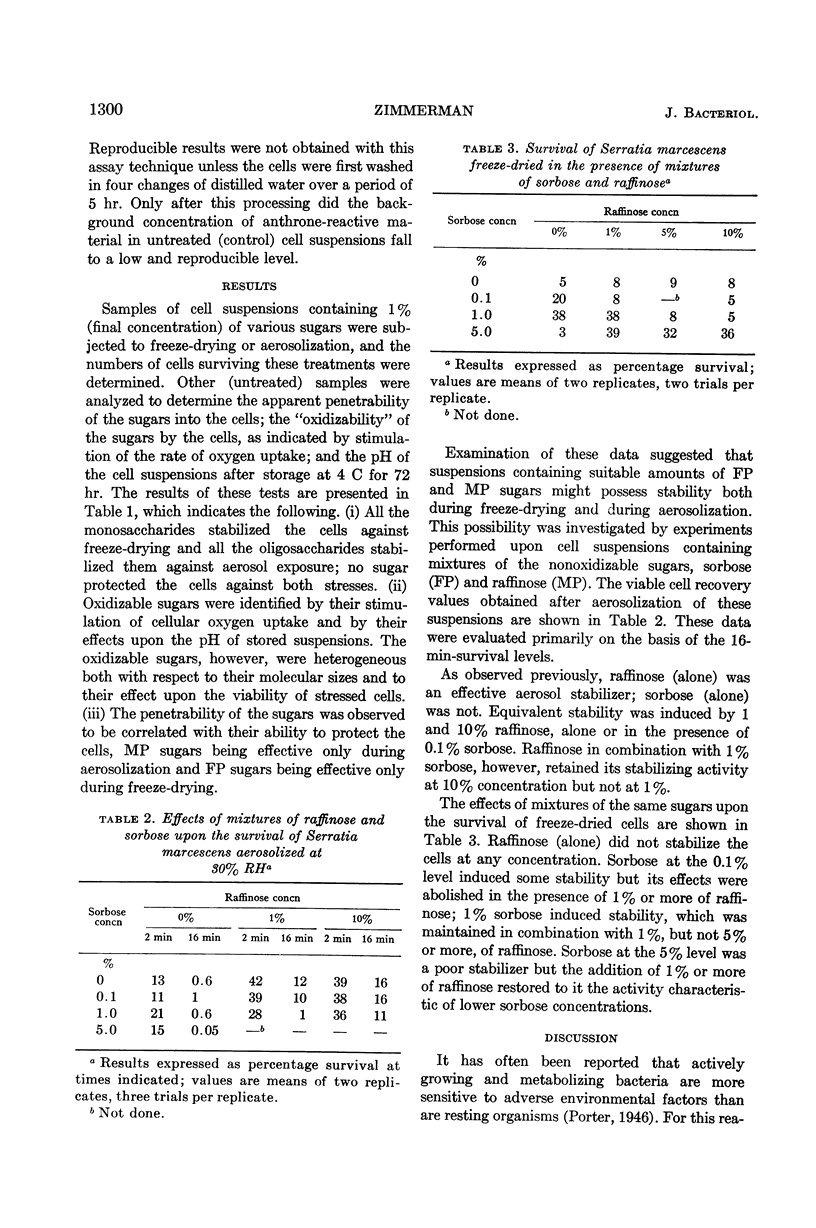

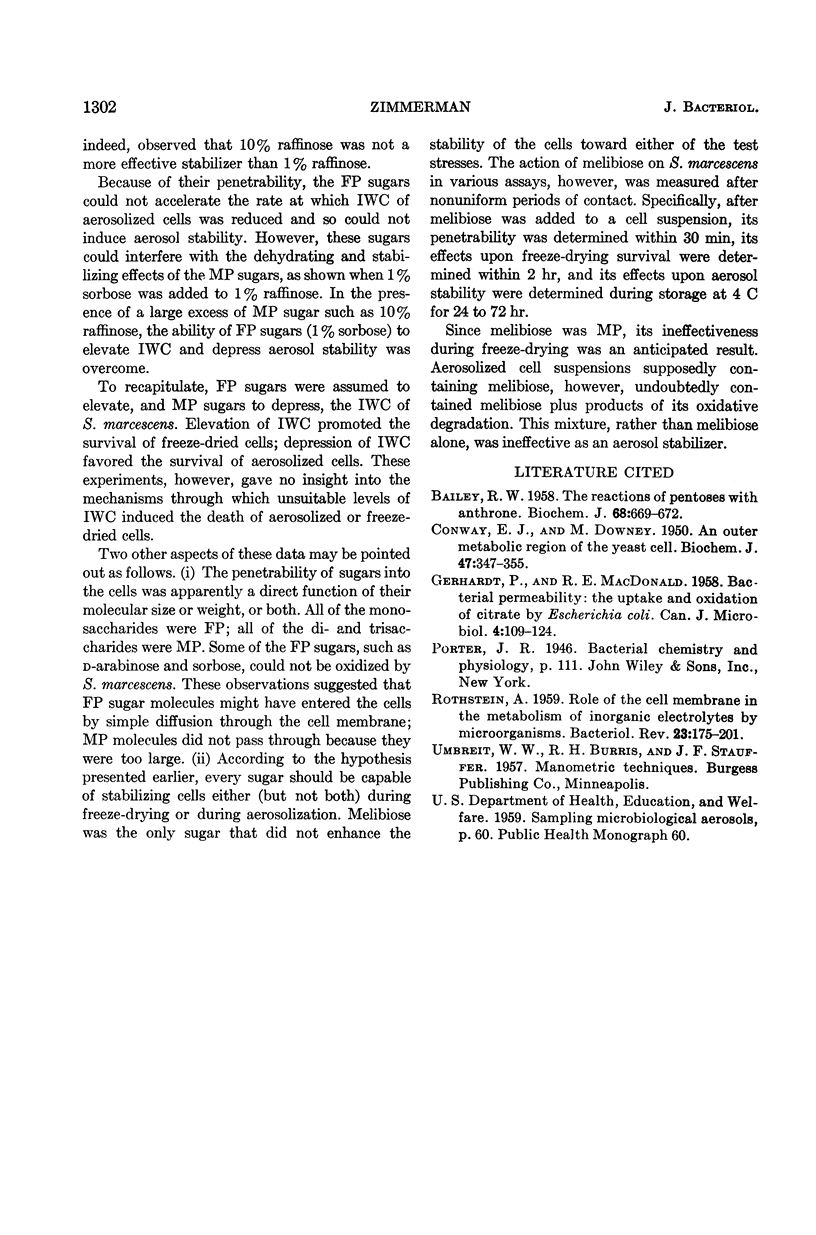
Selected References
These references are in PubMed. This may not be the complete list of references from this article.
- BAILEY R. W. The reaction of pentoses with anthrone. Biochem J. 1958 Apr;68(4):669–672. doi: 10.1042/bj0680669. [DOI] [PMC free article] [PubMed] [Google Scholar]
- CONWAY E. J., DOWNEY M. An outer metabolic region of the yeast cell. Biochem J. 1950 Sep;47(3):347–355. doi: 10.1042/bj0470347. [DOI] [PMC free article] [PubMed] [Google Scholar]
- MACDONALD R. E., GERHARDT P. Bacterial permeability: the uptake and oxidation of citrate by Escherichia coli. Can J Microbiol. 1958 Apr;4(2):109–124. doi: 10.1139/m58-013. [DOI] [PubMed] [Google Scholar]
- ROTHSTEIN A. Role of the cell membrane in the metabolism of inorganic electrolytes by microorganisms. Bacteriol Rev. 1959 Dec;23(4):175–201. doi: 10.1128/br.23.4.175-201.1959. [DOI] [PMC free article] [PubMed] [Google Scholar]


